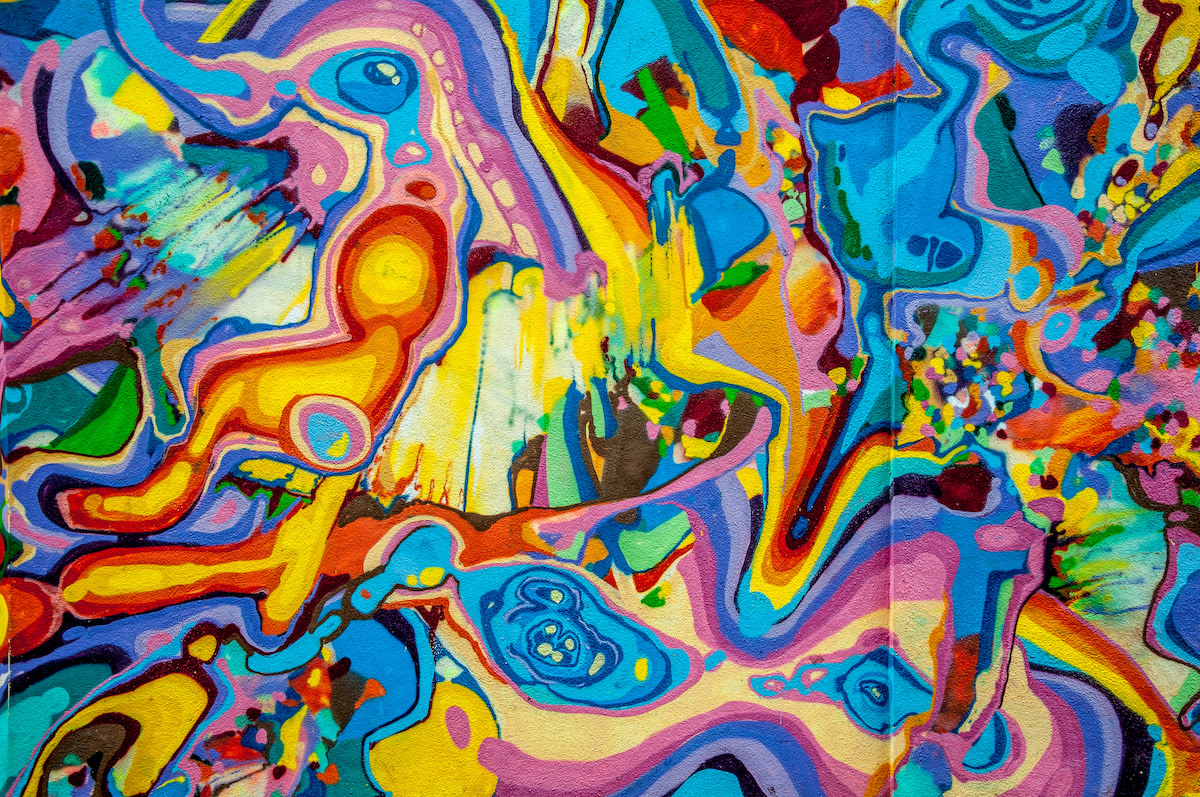A Brief History of Graffiti: A Look at 5 Modern Graffiti Artists
Written by MasterClass
Last updated: Aug 11, 2021 • 4 min read
Graffiti is a form of artistic expression spanning centuries, which continues to evolve into newer and more unique forms today.
Learn From the Best
What Is Graffiti?
Graffiti refers to unauthorized writings, paintings, drawings, etchings, or illustrations on a wall or other structure surface in a public space. This form of public art usually consists of written words, images, or large-scale murals, which artists draw using aerosol spray paint, markers, stencils, and other artistic tools. Graffiti artists typically draw their works within the public view, often illegally, on billboards, street signs, subway trains, buildings, walls, and boxcars.
When tagging—the act of creating graffiti without permission on someone’s property—many graffiti artists use monikers, or tags, to maintain their anonymity when signing their work. Modern graffiti by artists like Banksy have commercialized the art form, creating lauded works in public spaces without permission. However, in many places, tagging public property without permission is considered a form of vandalism that comes with serious legal consequences.
Some music historians, hip-hop artists, and music enthusiasts consider graffiti to be one of the four elements of hip-hop, along with breakdancing, rapping or MCing, and DJing. However, some notable hip-hop pioneers have questioned its inclusion in the culture.
A Brief History of Modern Graffiti Culture
Graffiti is an art form that dates back to prehistoric times, with the cave paintings of early man as some of the earliest examples.
- Ancient origins. From the sex workers in ancient Greece using scratches and drawings in public places to advertise their services to the ancient Romans carving images into monuments to mock Christianity, graffiti has had a long history as a form of expression and communication.
- Cornbread ushers in a new era of graffiti. Modern graffiti culture did not emerge until the mid-1960s, when 12-year-old Darryl McCray began to tag his nickname, “Cornbread,” on the walls of Philadelphia’s Youth Development Center, a juvenile corrections facility. When the graffiti artist was released a few years later, he took his art to the streets, tagging surfaces and walls with his friends, which earned him notoriety.
- TAKI 183 tags New York. Around the same time, another teenage tagger in New York City, known simply as “TAKI,” also became a pioneer of the graffiti movement. The Greek-American graffiti artist was known for tagging subway trains, fire hydrants, and lampposts with his signature tag, “TAKI 183”—a combination of his nickname and the street where he lived in Washington Heights, a neighborhood in Manhattan, New York.
- A movement is born. The influx of graffiti art in Philadelphia and NYC inspired many others to begin tagging to make a name for themselves and their art. While some graffiti was made for vulgar and crude expression, others were true works of art, experimenting with different writing styles, painting tools, and motion.
- Political response. Graffiti has a controversial history, mainly with politicians and property owners who simply view graffiti as a form of vandalism. In some cases, instances of graffiti are immediately cleaned and removed from public surfaces, while other regions take steps to protect and conserve certain public artworks. The controversy primarily centers around what constitutes art—the inability to define such a broad term serves as the root of the debate itself.
5 Notable Contemporary Graffiti Artists
Contemporary graffiti (also known as “hip-hop graffiti”) rose in popularity in the United States during the 1960s, with artists like Cornbread and TAKI 183. This street art movement would continue to influence many other game-changing artists and styles, such as:
- 1. Banksy: Popular, anonymous street artist Banksy helped bring guerilla-style artwork into the mainstream with his satirical and subversive stencil art. Banksy’s art focuses on social and political activism. His anonymous nature allows him to infuse his work with honesty while depriving his dark-humored artistic commentary of ego, leaving the viewer to focus only on the artwork itself.
- 2. Jean-Michel Basquiat: Basquiat emerged on the urban art scene in the late 1970s, working with other artists of the graffiti subculture in places like Harlem and the Bronx. Basquiat started with short, spray-painted messages but eventually moved on to canvas paintings depicting religious or historical imagery. He also collaborated with other notable artists, including Andy Warhol and Keith Haring.
- 3. Blek le Rat: Also known as “the father of stencil graffiti,” this French artist made his mark in graffiti art history when he spray-painted images of rats all over Paris. For Blek, the rats symbolized marginalized citizens and the urban environment, and he spread his art throughout the city “like a plague.” After his arrest for painting in the street in 1991, Blek le Rat turned to pre-stenciled images to make the process quicker and less likely he’d be caught again.
- 4. Shepard Fairey: This contemporary street artist used a different medium for his graffiti: stickers. Fairey’s sticker campaign featured a silk-screened image of Andre the Giant with the words “OBEY” printed beneath it. The point of the art was to force people to pay attention to their environment and question the things they saw.
- 5. Lee Quiñones: This Puerto Rican-American artist is known for his politically and pop culture-charged artworks. Quiñones often spray-painted subway cars—around 125 in total—that were so respected in the art world, other graffiti writers would not paint over them. His art includes poetic messages, along with a large-scale version of his name, “LEE.”
Ready to Tap Into Your Artistic Abilities?
Grab the MasterClass Annual Membership and plumb the depths of your creativity with the help of abstract artist Futura, modern artist Jeff Koons, and stage designer Es Devlin. Our exclusive video lessons will teach you to do things like utilize color and scale, explore the beauty in everyday objects, and so much more.
